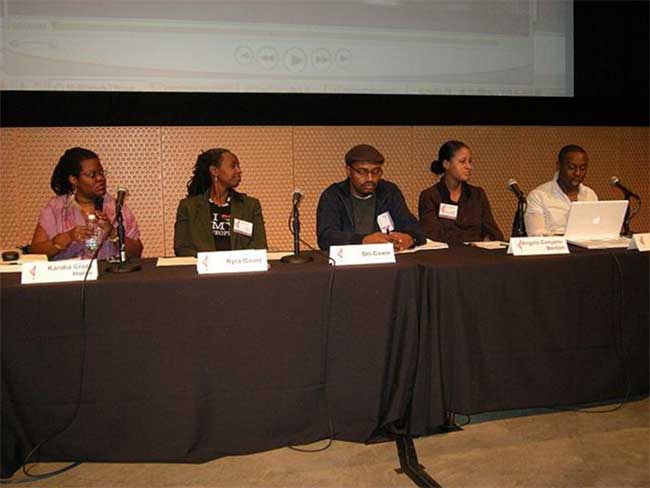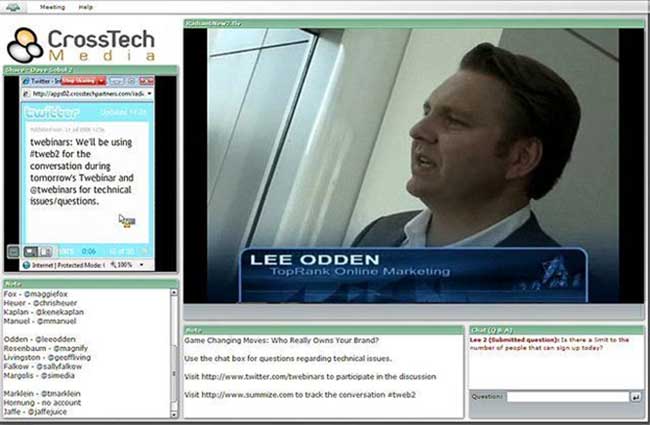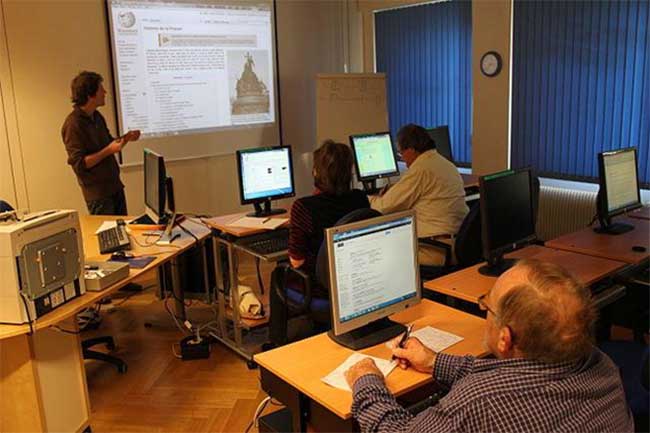There are many technology-based solutions that can make events hosting better and more efficient but did you know that web conferencing tools can be one of them? There are ways that make web conferences great for hosting events. Web conferencing tools, after all, are not just intended for small group discussions among a few participants. They can also facilitate different kinds of online events.
Video conferencing, as broadly understood, refers to the two-way video and audio based communication between two parties in different locations. This is what business executives usually do to simulate actual face-to-face conversations. Web conferencing, on the other hand, involves more than two parties, mostly individuals who participate in the conference through their respective web-enabled devices. In web conferencing, video is not a requisite but is a very common element.

1. Bridging Distances in a Cheaper and More Convenient Way
This one’s a no-brainer. Obviously, by using web conferencing solutions in hosting an event, distance no longer matters. Multiple events in different locations can be unified through an interface that allows interaction with both audio and video. Instead of finding a big enough venue in a convenient location for most or all participants, web conferencing software and large scale projectors can be used to connect events held in different places.
Web conferencing, in this case, is better than working out compromises to undertake an event in a single venue, requiring participants to be at the same place and the same time. There’s no need to spend for large delegations to convene in one location when the Internet enables event hosting, when there’s high speed Internet that can now enable high quality live video and audio transmissions.
Additionally, compared to video conferencing, hosting events through web conferencing is notably cheaper and more flexible. While video conferencing usually offers higher quality video and audio transmissions, many web conferencing software tools nowadays already offer good enough audio and video quality. They also come with additional features that create even better online event experiences.

2. Going Beyond Audio and Video
Video conferencing attempts to deliver the kind of experience afforded by real face-to-face conversations but it does not do anything else other than to transmit the audio and video of the conversations. Web conferencing remedies this limitation by infusing a host of other functions like the ability to share screens, show multimedia content other than the camera feeds, and enable collaboration. Web conferencing somewhat marries the advantages of video conferencing and the experience of actually attending an event— like being able to view presentation slides, videos, and the other audio-visual aids presented by a speaker in an actual event.

3. Impressing Prospects
Being able to host a successful event via web conferencing entails good organization, coordination, and presentation skills, especially in the context of making the most of available technology. A successfully staged web conference event will likely impress potential clients or partners. The ingenious use of presentations and interactive elements that can be accessed in most web conferencing software tools will definitely leave a good mark among participants.
4. Monitoring Audience Attention and Involvement
Many web conferencing tools come with features that enable the monitoring of audience attention and participation. These features are very useful in gauging the success of an event. It can be used in analyzing events to pinpoint mistakes or inadequacies and formulate ideas to make succeeding events more effective and more engaging. Obviously, video conferencing does not have these features. On the other hand, systems similar to these can be implemented in an actual live event but it would entail high costs and more demanding logistics.
5. Greater and More Fruitful Interaction
There are cases when online events via web conferencing encourage greater participation among attendees. This is because of the availability of various tools that directly facilitate interaction or participation. Polls, for instance, make sure that the opinions of the participants in an online event are heard. Everyone gets to have a closer look at the presentations being shown with the convenience of personalizing the experience; couple that with features like questions and answers sessions, private chats and screen sharing offering by a premium service like ClickMeeting, for example, conferencing is vastly more meaningful.
Moreover, since there exists a universally accepted decorum among web conference participants to give everyone the time to speak out, rowdy and disorderly expressions of opinions are avoided. Instead, everyone will likely act more calmly and be cautious with their actions since everyone acknowledges that it’s useless shouting and acting out in a web conference because they can be easily shut out or muted if they refuse to act within standards.
To sum it up, it can be said that web conferencing is better than video conferencing and traditional event hosting as it provides a host of advantages – including lower costs, scalability, flexibility, tools for enhanced interaction, the sharing of screens, possible collaboration, and the ability to impress prospects and generate leads.
5 Powerful Ways Web Conferences Are Better for Hosting Events,




